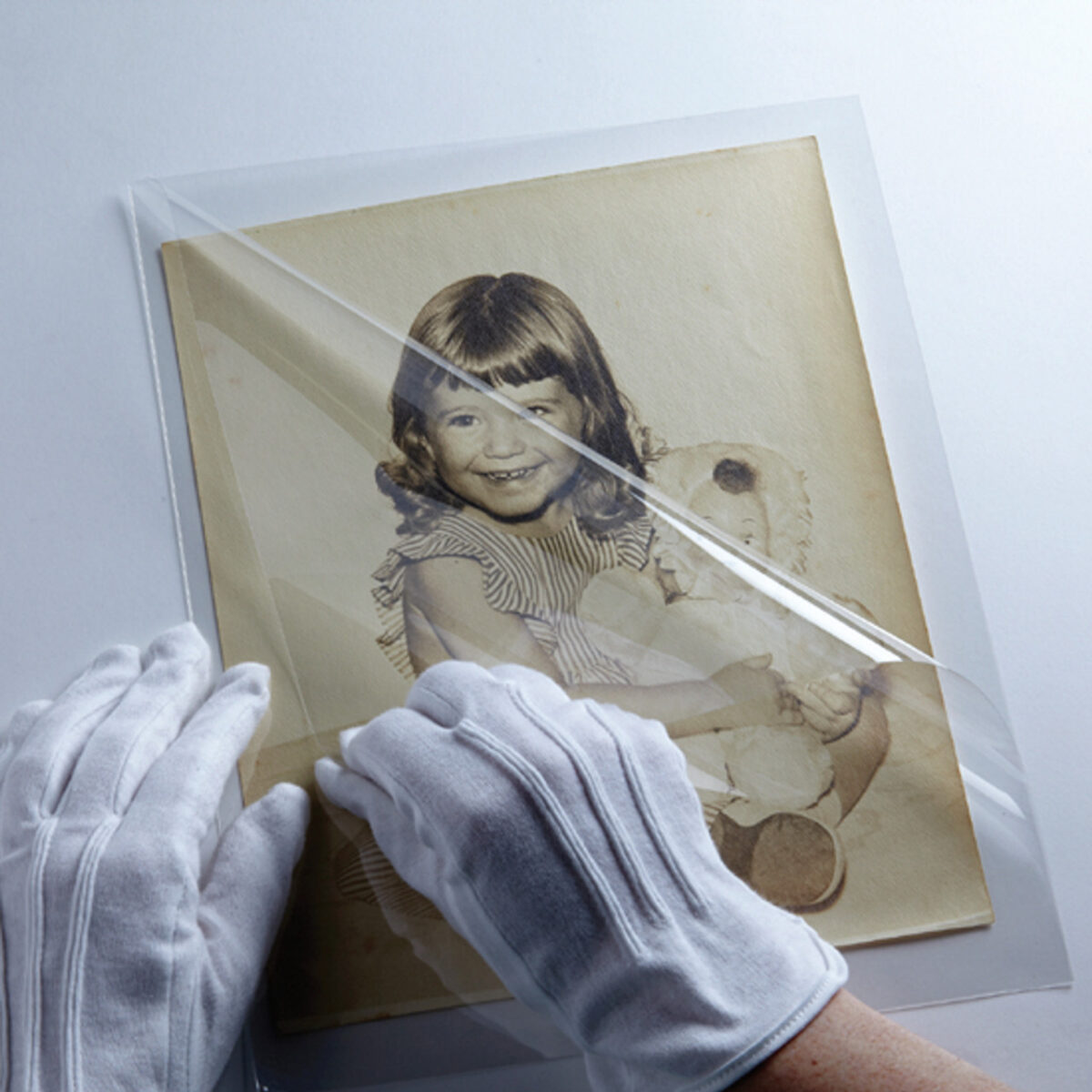
Do You Have Paperbased Records – Its Time to Protect Those Archives
A very important reason to archive your documents and archives is to avoid losing data. All documents are vulnerable to being destroyed, deleted, natural disaster, such as a flood or fire. A more serious reason for document archiving is deterioration of the papertypes. I cannot count the number of times we have experienced paper […]
Key Takeaways:
- Document archiving involves the long-term storage of inactive documents.
- A document archive can be either physical for paper documents or digital for electronic files.
- You should archive documents that you need to retain for legal, regulatory, or auditing purposes.
- The document archiving process involves planning, purging, and scanning paper documents.
-
physically damaged, weak, brittle, or discolored to dark brown and no longer capable of supporting or protecting the records;
-
reused from another non-archival purpose, such as one previously used to store food;
-
previously water damaged, infested with pests, soiled, or otherwise inadequate for the intended purpose.
-
When unbound documents are loose in a box, use enclosures such as letter or legal size folders, subfolders or envelopes that meet NARA specifications.
-
Replace any existing folder that is too small or so damaged that it fails to support the records.
-
Consider replacing folders and enclosures, wrappers, and dividers that are of obvious poor quality.
-
Align documents in the folder or enclosure neatly so they will support one another. Edges or corners of documents that are out of alignment and extend beyond the enclosure are easily bent, broken, or torn.
-
Acidic papers may become so brittle and weak over time that they are difficult to handle without breaking off pieces. Highly acidic papers can also stain and degrade other records they are in contact with.
-
Alternatively, support and segregate a highly acidic record by placing it in a polyester sleeve, between archival bond paper, or in an archival bond subfolder.
-
Remove non-record, loose, acidic inserts (such as cross-reference forms, withdrawal forms, or blank place-holders) left among archival records.
-
Photocopy or digitise any insert that contains important archival information onto archival bond paper, or hand-copy the information onto stable paper or card stock.
-
Alternatively, protect a brittle record that is difficult to handle without causing damage by placing it in a polyester L-sleeve.
-
When one or more tears extending across a significant portion of the paper may advance even with careful handling, use an L-sleeve to support the record and prevent it from tearing in two or more pieces.
-
Folded documents that can be safely opened for access can be stored in their folded format especially if the records are used infrequently.
-
Ease open a folded document on a flat work surface. Once unfolded, position the document with the peaks of the folds facing up. Then gently smooth out the folds with a fingertip. This technique will not flatten out the paper perfectly, but will permit the document to be placed in a file folder.
-
Avoid “popping” open a fold and do not back-fold documents to flatten them.
-
Leave a record that resists gentle action or that is stiff, brittle, or badly damaged folded.
-
Unrolling a document, especially if the paper is weak, stiff, or brittle, may cause the document to break, tear, or develop sharp and permanent creases.
-
Smaller records can be stored upright in an archival box larger than the unrolled record. Avoid undue pressure that may break the paper.
-
Always roll documents around the outside of a tube. Never put rolled documents inside a tube for storage: inserting them and removing them will cause damage.
-
Wrap the rolled document with acid-free paper, then polyester film as an outer wrapper, to protect it from dirt, light, and moisture. Secure the outer wrapper with cotton twill tape tied loosely enough to avoid crimping the document.
-
Do not remove historic or official fasteners used to associate records.
-
If documents fastened together in these ways must be separated for safe handling, access, or imaging. Archivists can separate the documents without damage or loss of information and without damaging seals or wafers crucial to the integrity of a document.
-
Unless there is a reason to remove it, it is usually safer to leave a fastener in place. Removing a fastener can cause damage and is often unnecessary to use the record.
-
When office-quality fasteners must be removed, replace them with more stable alternatives, store the associated records in a subfolder, or otherwise maintain their original association and order.
-
Remove fasteners that are actively causing damage to the records. Some fasteners are so tight that they deform records and make it difficult to roll back pages without tearing the paper. Minor rust is not a concern but heavily rusting staples may break resulting in lost associations; depending on their location rust may damage unique information.
-
Remove rubber bands and maintain association with a paper clip or a subfolder. Rubber bands deteriorate over time, becoming so hard and brittle that they break apart and no longer serve their function. Pieces of brittle rubber can become adhered to a record, and loose pieces can abrade surfaces.
-
Use a micro-spatula to remove fasteners. Always fully support the record on a table when removing a fastener. Place one hand on the record to hold it in position while removing the fastener with the other hand.
-
Work from the back of the record using the micro-spatula to lift each leg of a staple or loosen a tight paper clip.
-
Encrusted rust can make it harder to remove the fastener. Use a micro-spatula or tweezers to chip away at the rust and break its contact with the paper. Work gently with light pressure to avoid tearing or skinning the paper. Then remove loose particles with a small soft artist brush.
-
Slip the corner of a small piece of polyester film under the fastener before lifting the legs or attempting to chip away rust. This will prevent the micro-spatula from cutting into the paper.
-
Hardened and encrusted rubber bands may also be removed using a micro-spatula or tweezers to gently lift the encrusted pieces.
-
Place removed fasteners in a paper cup or similar container to prevent accidental damage to records from the discarded fasteners.
-
Tight fasteners such as grommets or heavy-weight staples can be so firmly embedded in the paper that attempts to remove them will damage the paper.
-
Place folded strips of archival bond paper (ca. 1″ wide and 3″ long) over the top edges of the documents to support the paper clip. Slide the paperclip over the paper strip.
-
For multiple groupings of papers in one folder, place paper clips at different points along the top edges of different groupings of associated records. Positioning paper clips in the same area on multiple groups of records creates accumulated bulk that will distort the paper.
-
Punch staples through strips of archival bond paper as described above, to help support and protect the documents.
-
Do not staple records of high intrinsic value or if the paper is weak, thin, or brittle.
-
No adhesive tape meets conservation standards, even those advertised as “archival,” so never attempt to mend documents with pressure sensitive tape or any type of adhesive.
-
Over time adhesives migrate into, embrittle, and stain the paper.
-
Solvents in the adhesive can cause inks to bleed.
-
Tapes shrink and distort, and as the adhesive fails over time, the carry strip peels so the tear or addition is no longer held together.
-
The solvents and techniques needed to remove tape and adhesives varies depending on the type of tape used, its age and degree of deterioration.
-
Unskilled attempts to remove tape will likely tear the paper, damage information, and leave sticky residues that affect adjacent records.
-
If a sticky note covers unique text, consider repositioning it over an area without information, if the note detaches easily. Do not force the note to detach.
-
If a note obscures unique information but the position of the note is significant, record the original location by photocopying or scanning and printing out a copy of the page before moving the note.
-
If there is insufficient blank area to reposition the note on the record, place it in an L-sleeve located before the associated record. If a repositioned note appears to adhere weakly, consider attaching it to the page with one stainless steel staple.
-
House one or several records in a folder larger than the record; avoid overfilling any one folder. Consider using unbuffered archival folders to house blueprints which are sensitive to higher pH levels.
-
Arrange folders in flat map case drawers or in oversize archival boxes that will fit onto shelving.
-
Ensure that the drawer or box is large enough to accommodate the size of the records.
-
Follow established cross-reference procedures when relocating an oversize item from its associated collection.
-
If already folded, refold along the existing fold line.
-
If the paper is strong and flexible, make a single fold in the document to allow it to fit into its container.
-
Evaluate the best location to make a new fold. If possible, fold in a blank area without information. Do not fold across the middle of a line of text or other information.
-
Do not fold significant records of high intrinsic value, brittle records, photographic materials, posters, or original artwork.
More in Office Services

Catering laundry solutions for spotless table linens by Freya Gutteridge, Oxwash
In the catering industry, pristine table linens are essential for enhancing both presentation and hygiene. Crisp, spotless linens create a professional atmosphere and ensure a safe dining environment for guests. Effective laundry solutions, such as the use of biodegradable detergents and advanced washing techniques, help maintain fabric quality and remove tough stains without harming the environment.

Aston & James Wins Dealer of the Year at National Industry...
The BOSS Federation National Industry Awards Since 1905 BOSS has been the authoritative body for the UK business supplies industry, supporting the sector and its people. It is a not-for-profit organisation that concentrates its efforts on playing a strategic role in the support, promotion and protection of the industry. BOSS represents all businesses along the […]

100 Coats for Those Who Are Homeless in Oxfordshire This Winter
Help us donate 100 coats for those who are homeless in Oxfordshire this winter! Many of us enjoy the luxury of heat and shelter when the weather turns, but many people in Oxfordshire don’t have anywhere to call home. When the cold weather commences those in our community desperately need clean warm coats to help […]


